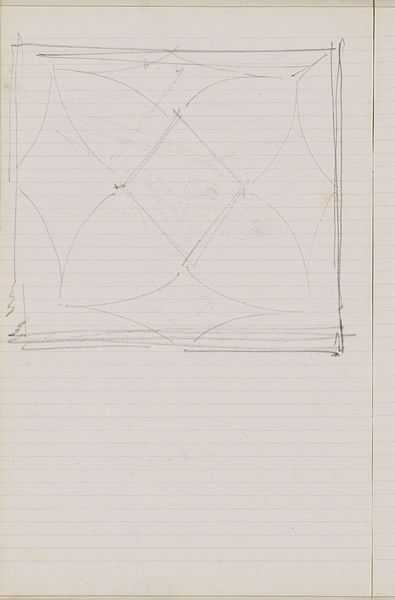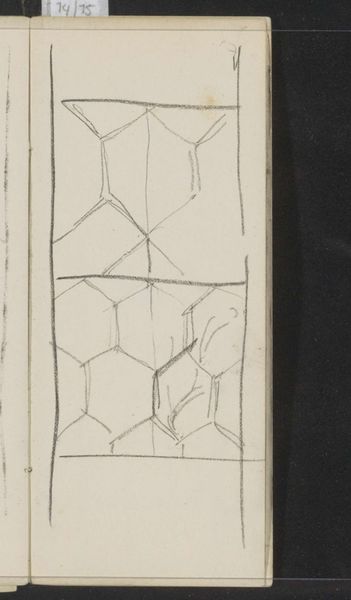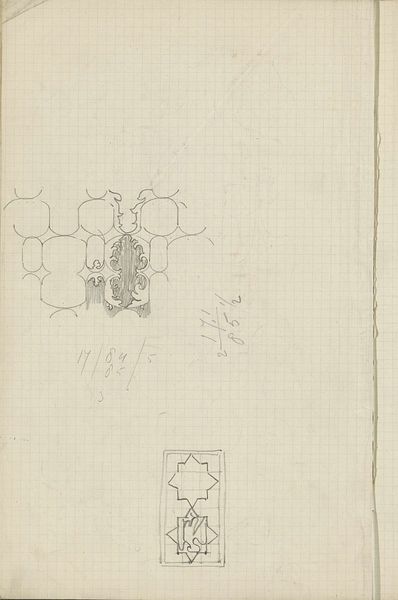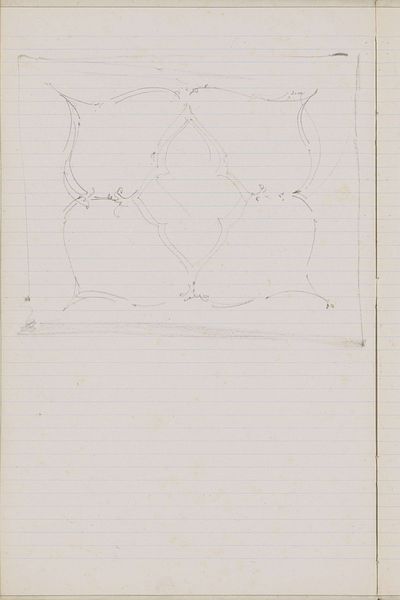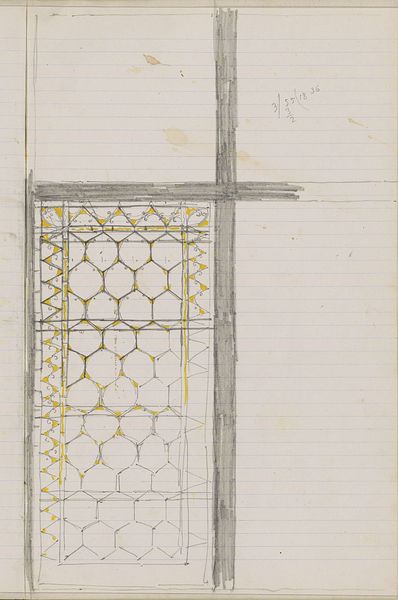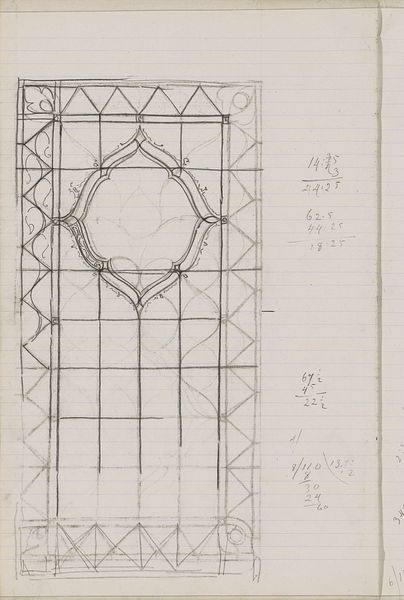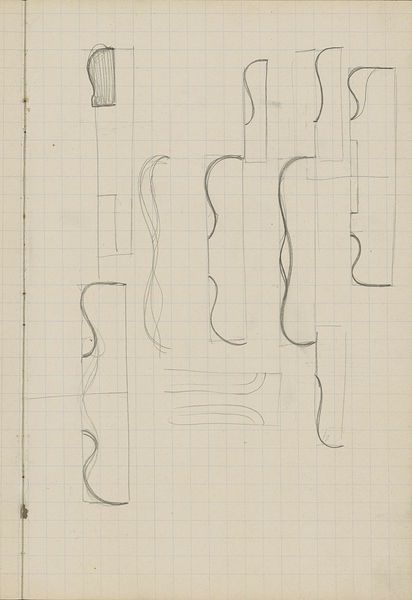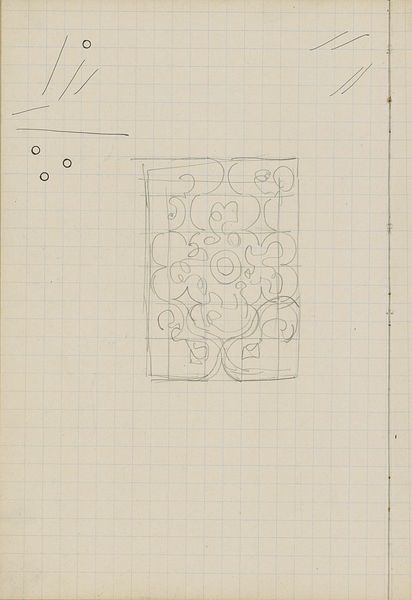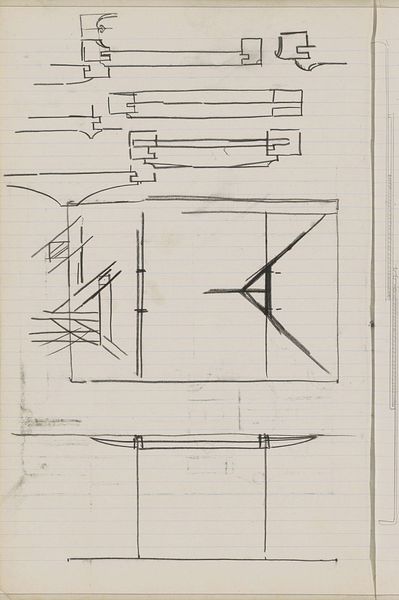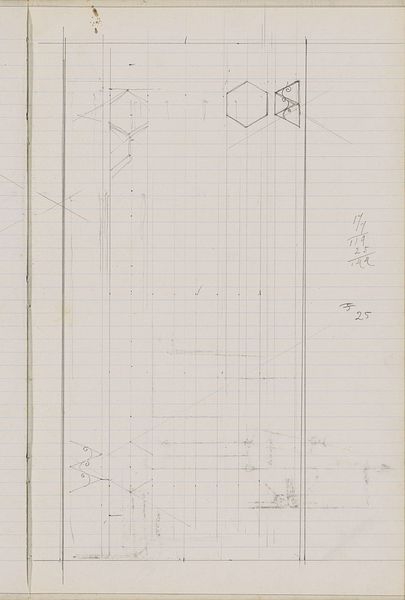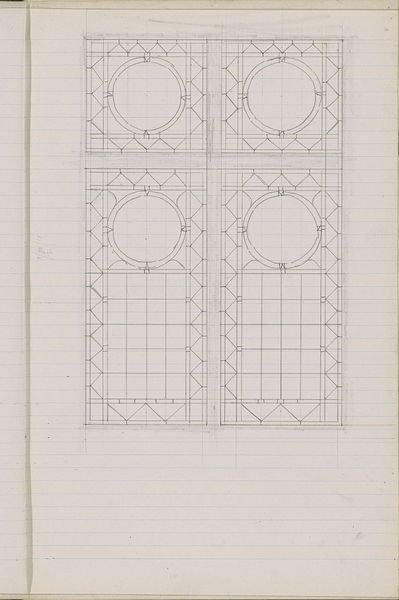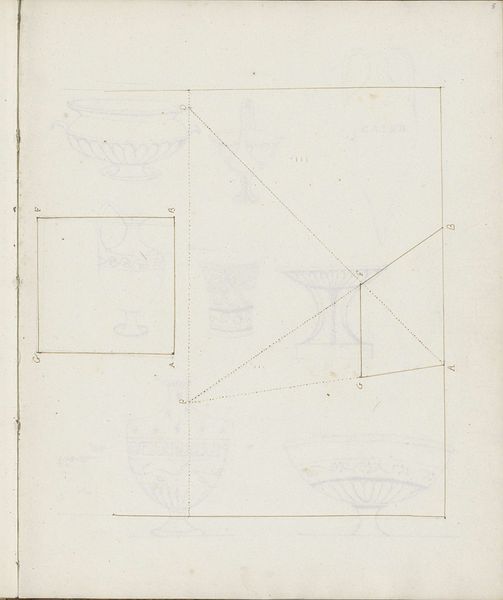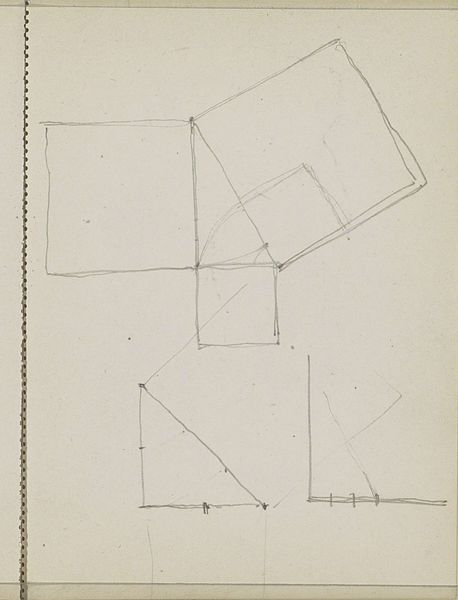
drawing, paper, pencil
#
drawing
#
amateur sketch
#
aged paper
#
toned paper
#
light pencil work
#
hand written
#
art-nouveau
#
ink paper printed
#
sketched
#
incomplete sketchy
#
hand drawn type
#
paper
#
personal sketchbook
#
geometric
#
pencil
#
abstraction
Copyright: Rijks Museum: Open Domain
Curator: Standing here, one might easily overlook Gerrit Willem Dijsselhof's "Ontwerp met honingraatpatroon," dating back to around 1901, a delicate pencil drawing on paper, presently residing here at the Rijksmuseum. Editor: My first impression? An unfinished symphony of geometry, light on the page. It feels more like a whisper of an idea than a fully formed design. There's an openness that is immediately engaging. Curator: Absolutely, and that incompleteness provides an entry point into understanding Dijsselhof's practice and the Art Nouveau movement at the turn of the century. These design sketches were instrumental in exploring the societal yearning for new artistic vocabularies that echoed organic and geometric principles. The turn to nature can itself be understood as part of a reaction against industrialization and the rapid social changes that it forced upon society. Editor: It's more than just aesthetics, isn't it? That honeycombed design… isn't it a statement about community, social organization, and maybe even critiquing the prevailing social structures of the time? We always look to non-human organization, of insect colonies, as possible alternatives to oppressive structures. Curator: Indeed. Consider the Arts and Crafts movement—of which Dijsselhof was keenly aware—its investment in labor and an artisanal ideal. The honeycomb represents this utopian longing, while also celebrating craft and industry with an aesthetic form that is so incredibly satisfying to the eye. His position in the Netherlands afforded him an outlook different than that of William Morris. Editor: So, this "sketchiness" actually becomes a virtue? The artwork itself performs the open-ended nature of political possibility? How exciting! Curator: Precisely! Dijsselhof's work, though subtle, invites a dialogue on alternative ways of perceiving form and social relations in design, then and now. It's interesting to see this piece and to wonder where such sketches led, as the final products must bear traces of these early forms. Editor: Yes, thinking through the intersectional implications of that history helps us think about this quiet sketch as holding potential energy and social commentary, even if implicit. The incompleteness doesn't necessarily suggest a failed project, but instead a beginning! Curator: Right, that seed of design, in this piece, gives us space to engage, question, and imagine. Editor: Well, I will carry those quiet provocations of an aged honeycomb back out with me. Thanks.
Comments
No comments
Be the first to comment and join the conversation on the ultimate creative platform.
